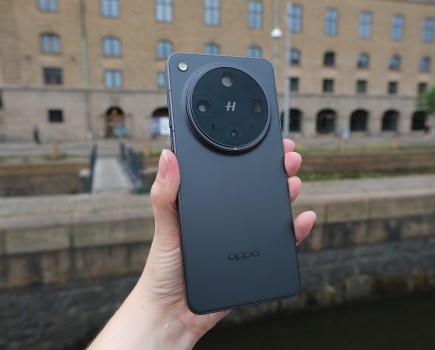HandeVision Ibelux 40mm f/0.85 review – Introduction
There are lenses with fast apertures and there are lenses with incredibly fast apertures. The HandeVision Ibelux 40mm f/0.85 falls into the latter category and holds the title of being the world’s fastest lens in production. Faster than Leica’s 50mm Noctilux-M ASPH f/0.95 and the series of f/0.95 optics Voigtländer produces for Micro Four Thirds, this Ibelux 40mm f/0.85 is an ultra-bright manual focus lens that’s available in four lens mounts.
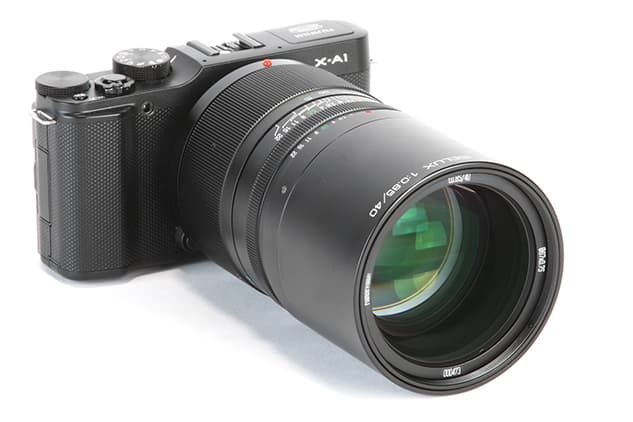
Catering for Micro Four Thirds, Sony E-mount, Fujifilm X mount and Canon EOS M mount, it provides a 35mm-equivalent focal length of 80mm when it’s attached to Micro Four Thirds cameras and is equivalent to a 60mm lens when it’s paired up with cameras that enforce a 1.5x multiplication.
Being half a stop faster than a f/1 lens and one third of a stop faster than lenses with an f/0.95 maximum aperture, it’ll appeal to those who’d like the option of shooting as fast as possible in low light, as well as those who’d like to explore its incredibly shallow depth-of-field capabilities. Before we analyse our lab results and real-world findings, let’s find out some more about this intriguing optic.
HandeVision Ibelux 40mm f/0.85 – Features
Take a glance at the underside of the barrel and you’ll come across some engraved lettering that tells us more about the design of the lens and where it’s made. Jointly developed by camera adapter specialist Kipon and IB/E optics GmbH in Germany, the Ibelux 40mm f/0.85 is manufactured in China by Shanghai Transvision. By merging German engineering standards with Chinese cost-effective production, the companies decided to create a new brand name for the partnership, which is HandeVision. The first three letters ‘Han’ stand for China in Mandarin, while the following two letters ‘De’ represent the first two letters of the German name for Germany – Deutschland.

The Ibelux 40mm f/0.85 features an optical construction of 10 elements in 8 groups, including a concave front element that’s said to reduce chromatic aberrations and maintain a central angle of incidence of 2.6° for sharp results and minimal distortion throughout the aperture range. The lens benefits from a 10-blade aperture to ensure out-of-focus points of lights (or bokeh) are portrayed in a circular shape. It’s easy to make out these 10 aperture blades when you peer down the barrel and rotate the aperture ring across its f/0.85-f/22 range.

At the rear, the lens employs a metal mount, but being manual-focus only there are no metal contacts to form an electronic connection between the camera and lens, meaning the EXIF data recorded by the camera won’t offer any information about the focal length or aperture used. If you’d like to keep a record of your aperture settings, you’ll need to write these down as you shoot. The only other alternative is to use your camera’s rating system as a reference – for example, I rated all the images I took at the lens’s maximum aperture with one star and all the images I took at f/2 with two stars.

Other features to note include its 75cm minimum focusing distance and its 67mm thread at the front for attaching screw-in filters and adapters. Unusually, HandeVision supplies the lens with a screw-in metal lens cap as opposed to the pinch style that we’re much more familiar with on today’s lenses. As part of the boxed contents, you also get a leather case that features a well-padded interior to provide additional protection on the move.
HandeVision Ibelux 40mm f/0.85 – Build and handling
On first impression, the Ibelux 40mm f/0.85 appears to follow the model of German car manufacturing, which is often reserved when it comes to styling and design, and is best known for its robustness and stellar build quality. With an all-metal and glass design, and no plastic in sight other than the lens cap at the rear, it’s a solid chunk that feels a lot heavier than you’d expect for a lens of its stature. To put its weight into perspective, it’s almost double that of the Voigtländer 42.5mm f/0.95. The mass of this lens (1.2kg) goes against the weight-saving approach that many photographers are trying to make by switching systems and moving to mirrorless.

As well as heavy, the barrel is incredibly long. This combination never bodes well for mirrorless cameras and can make the smallest models feel nose heavy and unbalanced in the hand. Though our X-mount sample of the lens didn’t feel out of place when it was coupled to the Fujifilm X-T2 with the VPB-XT2 vertical power booster attached, I was aware that the combination of camera and lens felt much more front heavy with it removed. With no tripod collar or tripod thread built into the lens, you’ll find yourself supporting the barrel in the palm of your left hand. It’s also worth pointing out lenses as heavy as this one can put increased strain on a camera’s lens mount.
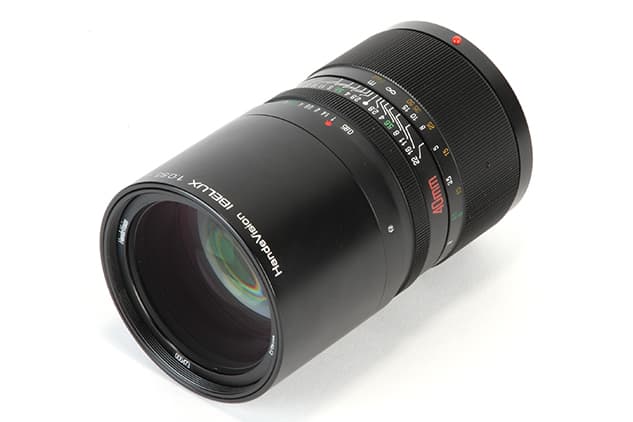
To shield the front element from flare and glare, there’s an in-built lens hood that operates in a push/pull fashion. Despite reports of the hood working loose on other press samples, ours was a good tight fit and operated without fault. The only thing I would say about it is that it doesn’t extend particularly far beyond the front element and the screw-in lens cap can’t be removed when it is extended. I tended to keep the lens cap stowed away in my pocket as I found it too much of a nuisance unscrewing and screwing it back on each time.
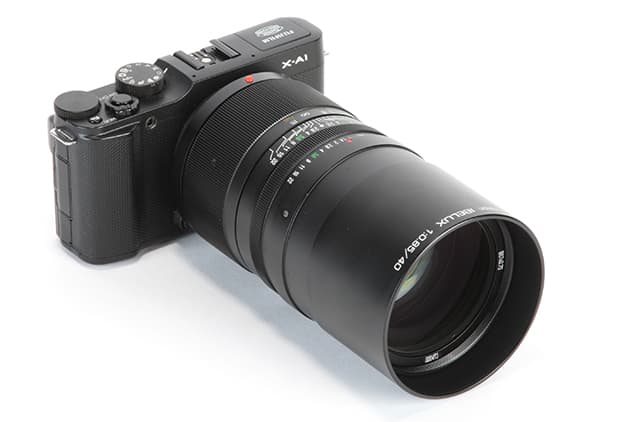
Working back from the lens hood, you’ll come across the thin and finely grooved metal aperture ring. This clicks between stops but doesn’t click at half-stop intervals like many other manual-aperture lenses. The aperture settings and focus distance markings are all engraved and well painted. However, a prolonged spell of shooting revealed that the focus ring could benefit from being better damped. As it is, the tiniest knock or touch of the manual-focus ring is enough to throw the focus out – something that’s incredibly easy to do on a lens that allows you to shoot with such a shallow depth of field. The throw of the manual focus ring is fairly long, too. From its minimum focus distance (75cm) to infinity you’re looking at a rotation of almost 270 degrees. This has its advantages, in that it’s good for precise focusing adjustments, but makes it rather slow to acquire focus quickly between near and far subjects.
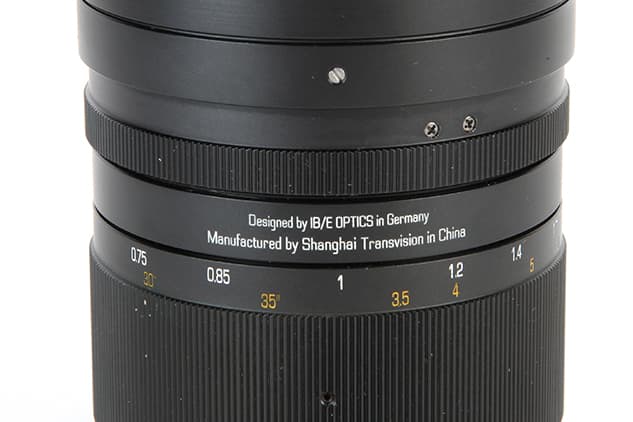
HandeVision has always been open about its mission to create high-grade lenses of metal construction with a clean, aesthetic finish. There will be some who find the old vintage style rather attractive, but as far as practicality and usability is concerned, I found it a bit of a pig to handle and it’s definitely not the lens you’ll want to pull from your bag when time is against you in a fast-paced or pressured shooting environment.
HandeVision Ibelux 40mm f/0.85 – Image quality
The appeal with this lens is its incredibly fast aperture, but with such a fine margin for error when it comes to acquiring focus at its widest aperture, it’s certainly not the most forgiving. To achieve optimum focus and useable results, you’ll need to take advantage of your camera’s manual-focus assist settings. By using focus peaking in combination with a magnified view in the viewfinder, I was able to shoot a series of sharp shots with glorious bokeh. It’s a lens that lends itself to portraiture and instances where you’d like to separate close subjects from distant ones to emphasise the impact.

We know a super-fast prime is likely to have its flaws at its maximum aperture, but the big question is, are they so bad to be unusable? During the time I spent testing the lens, I didn’t shy away from shooting at f/0.85, and although it’s not unusable at this aperture, it does require a lot of patience to find optimum focus and you will need to be prepared to shoot a lot of frames to get one that you consider sharp enough. As our lab results clearly show, things sharpen up considerably when you close down by a few stops and with such a fine margin for focusing error at f/0.85 I found myself stopping down to f/2-f/2.8 quite frequently.

It should be noted that coupling the lens to an APS-C camera does magnify the effect of chromatic aberrations. Spherical aberration and longitudinal chromatic aberrations were found to be severe in the images I took at wide aperture settings, and users will need to be prepared to manually correct for these in post-processing. A close inspection of images taken in the direction of the light revealed that the severity of purple fringing could be resolved by increasing the Defringe amount slider to a value of 10 using Lightroom CC.
Corner shading is observed in images taken at the widest aperture settings at the very edge of the frame. At f/0.85, we measured the corners to be approximately 1.2EV darker than the centre of the frame, but just like image sharpness, vignetting does improve when the aperture is closed down by a few stops.
HandeVision Ibelux 40mm f/0.85 review – Resolution, shading and curvilinear distortion
Resolution

A close look at our Applied Imaging tests confirms what we found by studying our real-world images. At f/0.85, the centre of the image is noticeably sharper than the corners. Centre sharpness improves as the lens is stopped down to f/5.6, with sharpness at the edges improving beyond f/2 right up to f/8. Users wishing to find the sweet spot between centre and edge sharpness will want to use the lens around f/5.6 and to help remind users that this is the optimum aperture for edge-to-edge image sharpness f/5.6 is coloured green on the barrel.
Shading
Using the lens at its maximum aperture introduces corner shading at the edges, with corners appearing approximately 1.2EV darker than the centre of the image. Stopping the lens down to f/1.4 sees an improvement, with corners appearing 0.8EV darker than at the centre. You can use the lens between f/2.8-f/22 safe in the knowledge that vignetting won’t be an issue.
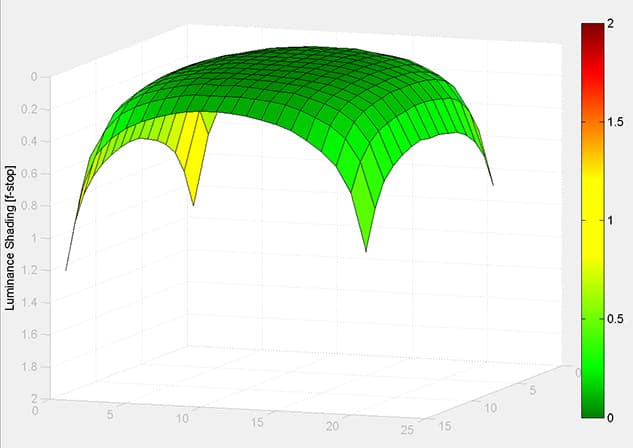
40mm @ f/0.85
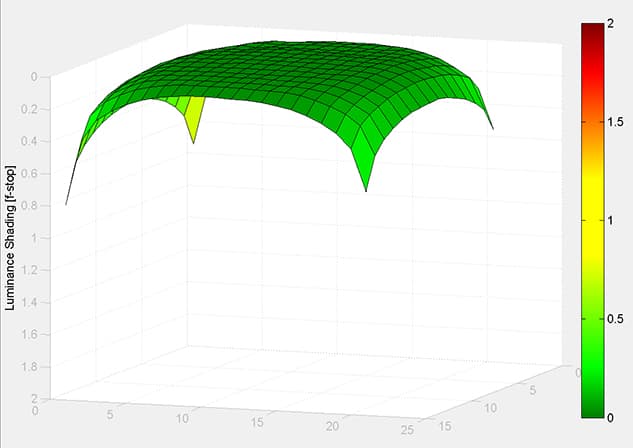
40mm @ f/1.4

40mm @ f/2

40mm @ f/2.8
Curvilinear distortion
An inspection of our distortion chart reveals the lens exhibits some barrel distortion, whereby the straight lines bow outwards a little towards the edge of the frame. In real-world images, you’ll be hard pushed to notice it unless you go in search of it. To counteract the minor barrel distortion in my test images, I took manual control of the distortion amount slider in Lightroom and set it to a value of +5.

12mm SMIA TV = -1.2%
HandeVision Ibelux 40mm f/0.85 review – Verdict
It may lay claim to being the world’s fastest lens, but this test has revealed that it has more cons than it does pros. As much as we love the beautiful blurred backgrounds and outstanding bokeh it’s capable of creating at wide apertures, which remains the sole reason you’d buy this lens, it lets itself down in a number of areas regarding its image quality and handling. Corner sharpness is disappointing at wide apertures and doesn’t improve as fast as we’d expect when it’s closed down. It exhibits very obvious purple fringing and spherical aberration at wide apertures, too. Then there’s the handling – it’s bulky and weighs an absolute ton. On a majority of lightweight mirrorless cameras, it feels poorly balanced and far too front heavy.

Micro Four Thirds users would be far better to forego the 1/3 stop of aperture you gain from this lens and opt for the Voigtländer 42.5mm f/0.95 instead. The Mitakon 50mm f/0.95 is a cheaper option for Sony E-mount users looking for a fast manual-focus lens and despite being longer, I’d choose the Fujifilm 56mm f/1.2 R XF ahead of this lens in an instant.

For the time and effort you’ll spend hunting around to find a good price for this lens, you’ll be far off considering your alternatives first. Hopefully the new series of HandeVision IBERIT full-frame lenses, which covers 24mm, 35mm, 50mm, 75mm and 90mm focal lengths with a constant aperture of f/2.4 for Sony E-mount, Leica SL mount, Leica M mount and Fuji X-mount, will be more appealing.







